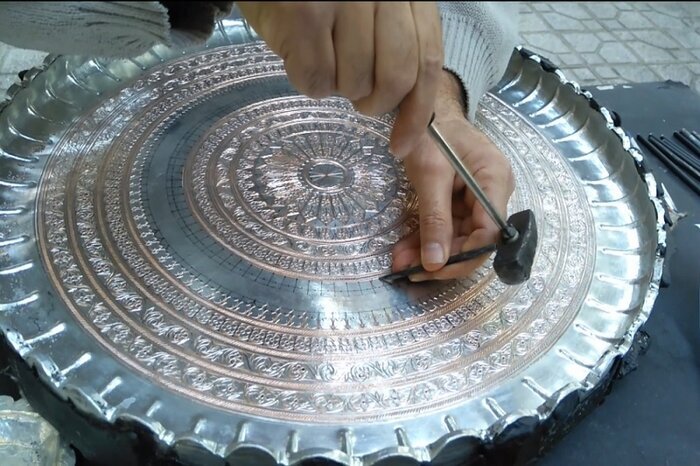24 handicraft training courses held in Zanjan

TEHRAN – A total of 24 handicraft training courses were conducted in various cities across the northwestern Zanjan province during the first half of the current Iranian calendar year 1400 (started March 21).
The courses were held in the fields of filigree, kilim, jajim, traditional jewelry, cutting semi-precious stones, copperware, and traditional textile, the deputy provincial tourism chief has said.
Over 240 people have been trained as crafters during the courses, which aimed at reviving indigenous arts, helping home-based businesses, improving the region’s economy, and supporting sustainable production and employment in rural areas, Elnaz Khodaifard announced on Saturday.
Earlier in August, the official announced that prisons across the province have been offering handicraft training courses in a bid to empower the inmates.
The courses, which have been held by the experienced handicrafts masters, are also intended to generate employment for inmates in the post-prison period and become a source of income for them, she added.
According to the provincial tourism chief Amir Arjmand, handicraft products worth more than $1.3 million were exported from Zanjan province in the previous Iranian calendar year. Handicrafts provided a very good capacity to generate income and jobs, and led to the development of the province, he mentioned.
In January 2020, Zanjan was designated as a “world city of filigree” by the World Crafts Council after the WCC assessors visited various craft workshops, stores, exhibits, and bazaars of the city in a two-day itinerary in December 2019.
With 14 entries, Iran ranks first globally for the number of cities and villages registered by the World Crafts Council, as China with seven entries, Chile with four, and India with three ones come next.
The value of Iran’s handicrafts exports stood at $120 million during the first eleven months of the past Iranian calendar year 1399 (March 20, 2020 – February 18, 2021), Mehr reported. The country’s handicrafts exports slumped during the mentioned months in comparison to the same period last a year earlier due to the damage the coronavirus pandemic has inflicted on global trade.
The Islamic Republic exported $427 million worth of handicrafts during the first eleven months of the calendar year 1398. Of the figure, some $190 million was earned via suitcase trade (allowed for customs-free and tax-free transfer) through 20 provinces, according to data compiled by the Ministry of Cultural Heritage, Tourism and Handicrafts.
ABU/AFM

Leave a Comment